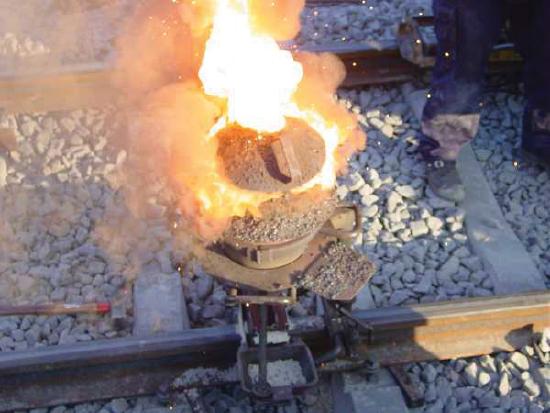5.9: Stoichiometry Calculations Using Enthalpy
Learning Objective
- Incorporate energy changes in stoichiometry calculations using thermochemical equations.
Previously, we related quantities of one substance to another in a chemical equation by performing calculations that used the balanced chemical equation; the balanced chemical equation provided equivalents that we used to construct conversion factors. For example, in the balanced chemical equation:
2 H2 (g) + O2 (g) → 2 H2O (ℓ)
we recognized the equivalents:
2 mol H2 ⇔ 1 mol O2 ⇔ 2 mol H2O
where ⇔ is the mathematical symbol for “is equivalent to.” In our thermochemical equation, however, we have another quantity-energy change:
2 H2 (g) + O2 (g) → 2 H2O (ℓ) ΔH = -570 kJ
This new quantity allows us to add another equivalent to our list:
2 mol H2 ⇔ 1 mol O2 ⇔ 2 mol H2O ⇔ –570 kJ
That is, we can now add an energy amount to the equivalents—the enthalpy change of a balanced chemical reaction. This equivalence can also be used to construct conversion factors so that we can relate enthalpy change to amounts of substances reacted or produced.
Note that these equivalents address a concern. When an amount of energy is listed for a balanced chemical reaction, what amount(s) of reactants or products does it refer to? The answer is that it relates to the number of moles of the substance, as indicated by its coefficient in the balanced chemical reaction. Thus, 2 mol of H2 are related to −570 kJ, while 1 mol of O2 is related to −570 kJ. This is why the unit on the energy change is kJ, not kJ/mol.
For example, consider the thermochemical equation:
2 H2 (g) + O2 (g) → 2 H2O (ℓ) ΔH = −570 kJ
The equivalencies for this thermochemical equation are:
1 mol H2 ⇔ 1 mol Cl2 ⇔ 2 mol HCl ⇔ −184.6 kJ
Suppose we are asked how much energy is given off when 8.22 mol of H2 react. We would construct a conversion factor between the number of moles of H2 and the energy given off, −184.6 kJ:
[latex]8.22~\bcancel{mol~H_2}[/latex] x [latex]\frac{-184.6~kJ}{1~\bcancel{mol~H_2}}[/latex] = [latex]-1520~kJ[/latex]
The negative sign means that this much energy is given off.
Example 5.9.1
Given the thermochemical equation:
N2 (g) + 3 H2 (g) → 2 NH3 (g) ΔH = −91.8 kJ
how much energy is given off when 222.4 g of N2 reacts?
Solution
The balanced thermochemical equation relates the energy change to moles, not grams, so we first convert the amount of N2 to moles and then use the thermochemical equation to determine the energy change:
[latex]222.4~\bcancel{g~N_2}[/latex] x [latex]\frac{1~\bcancel{mol~N_2}}{28.00~\bcancel{g~N_2}}[/latex] x [latex]\frac{-91.8~kJ}{1~\bcancel{mol~N_2}}[/latex] = -729 kJ
Exercise 5.9.1
Given the thermochemical equation:
N2 (g) + 3 H2 (g) → 2 NH3 (g) ΔH = −91.8kJ
how much heat is given off when 1.00 g of H2 reacts?
Answer
-15.1 kJ
Like any stoichiometric quantity, we can start with energy and determine an amount, rather than the other way around.
Example 5.9.2
Given the thermochemical equation:
N2 (g) + O2 (g) → 2 NO (g) ΔH = 180.6 kJ
if 558 kJ of energy are supplied, what mass of NO can be made?
Solution
This time, we start with an amount of energy:
[latex]558~\bcancel{kJ}[/latex] x [latex]\frac{2~\bcancel{mol~NO}}{180.6~\bcancel{kJ}}[/latex] x [latex]\frac{30.0~g~NO}{1~\bcancel{mol~NO}}[/latex] = [latex]185~g~NO[/latex]
Exercise 5.9.2
How many grams of N2 will react if 100.0 kJ of energy are supplied?
N2 (g) + O2 (g) → 2 NO (g) ΔH = 180.6 kJ
Answer
15.5 g
Chemistry
One very energetic reaction is called the thermite reaction. Its classic reactants are aluminum metal and iron(III) oxide; the reaction produces iron metal and aluminum oxide:
2 Al (s) + Fe2O3 (s) → Al2O3 (s)+ 2 Fe (s) ΔH = −850.2kJ
When properly done, the reaction gives off so much energy that the iron product comes off as a liquid. (Iron normally melts at 1,536°C.) If carefully directed, the liquid iron can fill spaces between two or more metal parts and, after it quickly cools, can weld the metal parts together.
Thermite reactions are used for this purpose even today. For civilian purposes, they are used to reweld broken locomotive axles that cannot be easily removed for repair. They are also used to weld railroad tracks together. Thermite reactions can also be used to separate thin pieces of metal if, for whatever reason, a torch doesn’t work.

Thermite reactions are also used for military purposes. Thermite mixtures are frequently used with additional components as incendiary devices—devices that start fires. Thermite reactions are also useful in disabling enemy weapons—a piece of artillery does not work when it has a hole melted into its barrel as a result of a thermite reaction!
Key Takeaway
- The energy change of a chemical reaction can be used in stoichiometry calculations.

